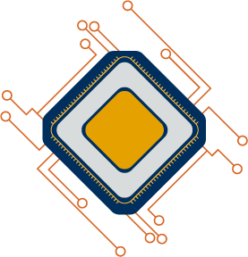In this section, it is discussed how relevant the nature (technical or non-technical) of the system is which is simulated regarding the question of inventive step. This chapter is based on the Enlarged Board of Appeal decision G1/19, points 118 to 121.
Simulations of non-technical and technical systems can contribute to inventive step
All a simulation does is provide information about the model underlying it. If the model is accurate enough and properly reflected in suitable equations and algorithms, the simulation may allow conclusions to be drawn about the physical reality being modelled.
E.g. the invention underlying the referring decision of G1/19 may test how a certain building structure – as represented by the model – would influence the movement of “autonomous entities” or pedestrians if they move in the way described by the model.
Should the simulation lead to a result different from that of experiments carried out in the “physical world”, the model may need adaptation. In practice, models are improved by being adapted in such a way that they result in data which more accurately reflects the physical reality modelled.
It may be that some simulations of technical systems do not contribute to inventive step.
For example, it may be considered that in a computer game the simulation of a billiard ball being played does not solve a technical problem.
Conversely, following the COMVIK approach, it is possible to envisage simulations of non-technical systems (such as weather simulations) that do contribute to inventive step.
It is not decisive whether the simulated system or process is technical or not
According to the COMVIK approach, it is not decisive whether the simulated system or process is technical or not. Rather, it is relevant whether the simulation of the system or process contributes to the solution of a technical problem. This question has to be answered using the same criteria as for other computer-implemented inventions. If a simulation is to be used for the verification or improvement of a technical system, it is of course the technical system which is simulated (based on the technical principles underlying the simulated system).
However, the mere calculation of the behaviour of a (technical) system as it exists on the computer, and the numerical output of such calculation, should not be confused with any technical effect of the simulation process.
Even if the simulated system or process is technical, it first has to be translated into models and algorithms (i.e. non-technical information) ahead of the simulation. Only after the first step can this non-technical information represent a technical system or process. Such models and algorithms first of all define (non-technical) constraints to be considered in the context of the COMVIK approach. Depending on whether they contribute to any technical effect achieved by the claimed simulation invention, they may or may not in fact be taken into account in the inventive step assessment.
